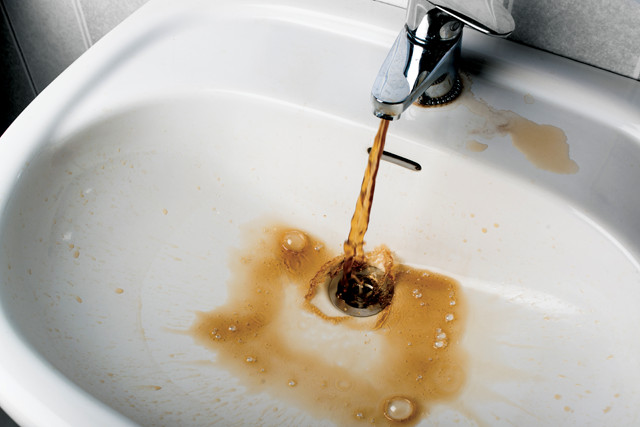
by Nick Parkins Friday, October 13, 2017

If your water runs red-orange, it may be corrosive. Credit: ©iStockphoto.com/Kari Hoglund.
Not all water corrosivity issues are obvious. For this reason, a hydrogeologist at the Maine Geological Survey, recommends that regular tests be conducted at least once every three years.
Water can often taste salty, which may suggest a high concentration of sodium, chloride or total dissolved solids. Pinhole leaks in pipes and blue-greenish stains in basins might indicate a corrosivity issue relating to copper or lead. Reddish-orange or black-brown stains are often indicative of iron or manganese corrosion.
Typical water testing might look for bacteria, nitrates/nitrites, lead, arsenic, uranium, radon, manganese, fluoride and corrosivity. “You can do this by contacting a water testing lab that is certified by the state government where you live,” Gordon says. “Usually the consumer can acquire sample bottles and instructions from the lab, take samples themselves, according to the instructions, and send or deliver them to the lab. Some testing companies may also visit your home.”
“Testing is most effective when combined with ongoing awareness and maintenance,” Gordon says. Private well owners should be aware of potential risks posed by land-use and -management practices in their area. Agriculture often results in the presence of nitrate, bacteria and pesticides in groundwater. Local coal mining may affect pH, iron and manganese. Gas drilling and heavily salted roadways can affect corrosivity by raising the sodium and chloride burden and (from roads in particular) the total organic solids entering local groundwater.
“Homeowners should test private wells at least once every three years, but more often if there are signs of corrosivity or other problems. Credit: Kent Blatter.
Private well and spring maintenance is also crucial. Well casings should protrude at least 30 centimeters aboveground and have a sanitary sealed and watertight well cap or concrete cover to prevent contamination. Spring boxes are particularly susceptible to contamination, so annual checks are advised. To prevent contamination from paint, motor oil, fertilizers or septic systems, for example, keep the area around the wellhead clean and easily accessible and ensure that a well or spring is 30 meters from potential sources of contamination.
© 2008-2021. All rights reserved. Any copying, redistribution or retransmission of any of the contents of this service without the expressed written permission of the American Geosciences Institute is expressly prohibited. Click here for all copyright requests.